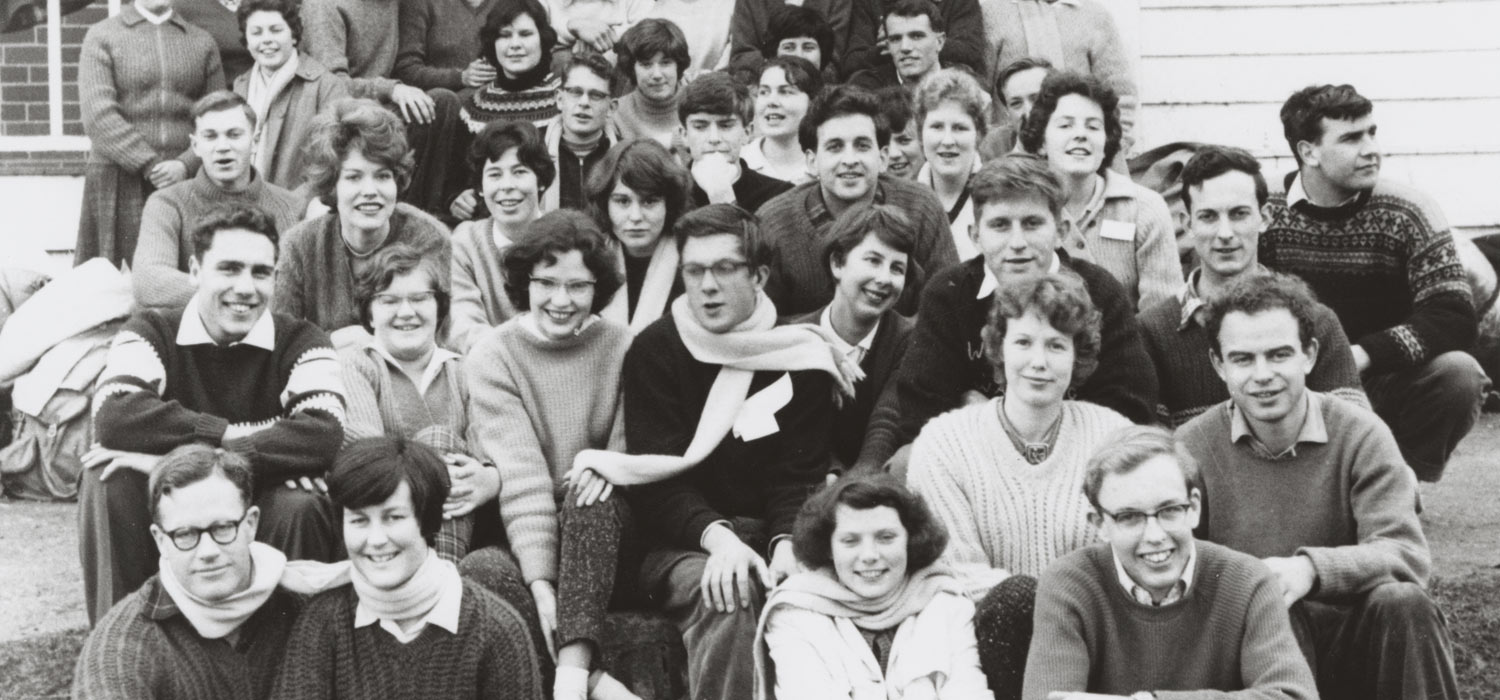
Whatever happened to …
… the Student Christian Movement?
Founded in 1896 as the Christian Union, the Student Christian Movement at Otago is perhaps best known for running annual second-hand textbook sales, but it has contributed much more to campus life over the last 122 years.
The Student Christian Movement (SCM) evolved out of the World Student Christian Federation, formed in Sweden in 1895 to unite Christian groups in universities under one international banner. When the federation's general secretary toured New Zealand the following year, students at Otago and elsewhere formed SCM branches.
SCM grew quickly in size and influence: more than a third of university students in Australasia in 1908 were members of SCM. Otago was the strongest and most enduring of the New Zealand branches: by 1915, just over 47 per cent of Otago students were members. SCM Otago was particularly popular among arts and divinity students. Initially it was a Protestant organisation, although a few Roman Catholics joined from the 1970s.
Former Otago “SCMers”, as members are known, have told of being attracted to SCM because it was “a place without boundaries” and had “an atmosphere of questioning and openness” in which students were free to explore what being a Christian meant for them.
SCM Otago set up a lending library; members took part in study circles and discussion groups; and they listened to guest speakers – often local ministers and academics – concerned with social issues and mission work. Several members later became overseas missionaries.
Some members, interested in left-wing political thought, became involved in the New Zealand Labour Party. They included a future Labour Party leader and minister of finance and health, Arnold Nordmeyer, who was an SCM official at Otago in the early 1920s.
From the 1920s, members raised money for diverse New Zealand causes, from victims of unemployment and earthquakes, to the Crippled Children's Society. Overseas campaigns included post-war fundraising for European refugees and for a 1925 European student relief fund. In support of this expression of internationalism, SCM asked, “Are you a citizen of the world, or a mere villager?”
SCM Otago members continued to support various causes and campaigns over the years, from marching along George Street in 1959 in Dunedin's first anti-nuclear protest, to joining Registry occupation protests in the 1990s, brandishing their “God Hates Fees” sign, and distributing healthy snacks to keep protestors' energies and spirits high.
The Student Christian Movement at Otago was also in the forefront of providing services to students. In 1900, for example, SCM members edited the first Student Handbook, which introduced the University to new students.
In 1906, SCM initiated fundraising through public subscription for the construction of a building with a hall and common room for use by all students. The government refused to subsidise the scheme, mistakenly believing that the intention was to erect a Christian mission hall. The Otago University Students' Association took over the plans and the fundraising, which the government then agreed to subsidise, and Allen Hall opened in 1914 as a student union building.
The highest profile SCM campus activity has been the annual book sales. Each New Zealand branch organised a second-hand textbook stall at the beginning of each academic year, with students buying and selling textbooks and a percentage of the proceeds being donated to charity.
The Otago book sales began in 1931, during the Great Depression, and although SCM book sales at other universities fell by the wayside, Otago's became a permanent institution. Most recently, the sales have been held in late February in the All Saints Anglican Church Hall, with proceeds going to charities such as Rape Crisis Dunedin.
SCM Otago tenaciously struggled on while branches at other universities became defunct in the late 1980s. Branches were later resuscitated at Canterbury and Victoria, and revival attempts are underway at Waikato and Auckland.
The heady days of nearly a half of Otago students belonging to SCM are long gone. SCM Otago president Rachel Tombs says that about 15 to 20 students are connected with SCM, but the core group of regular attenders is about 10.
The dramatic membership decline is partly a reflection of the decrease in the number of students who identify as being Christian. Tombs, who has uncovered some of the above history of SCM Otago as a part of her undergraduate history studies, says that it is also partly due to the proliferation of other religious groups and societies on campus, and students having less time to devote to groups such as SCM.
In addition to running successful book sales, members regularly meet at Knox Church, and continue the tradition of supporting good causes, from last year joining an Octagon sleep-out to raise awareness of and money for the Dunedin Night Shelter, to organising a suicide awareness march and hosting a workshop with Rape Crisis.
